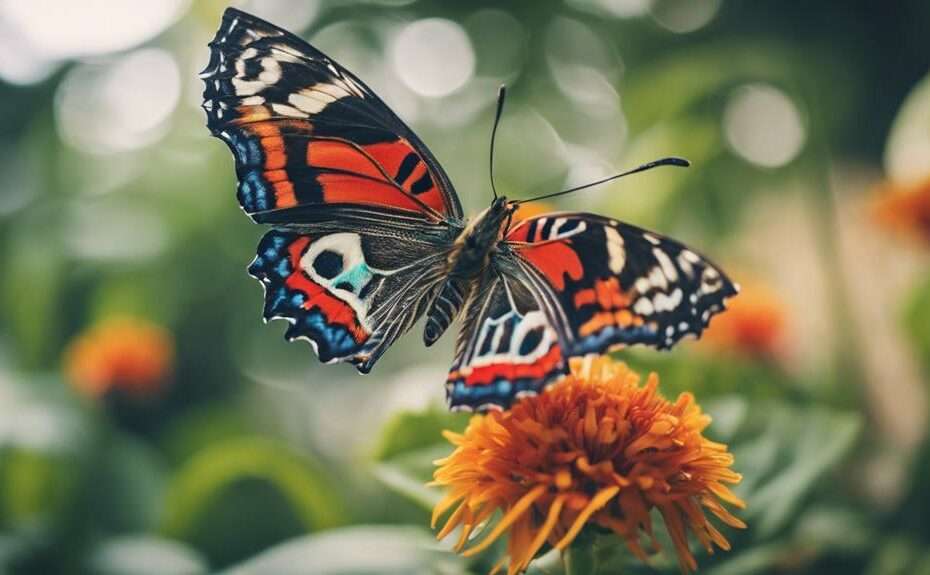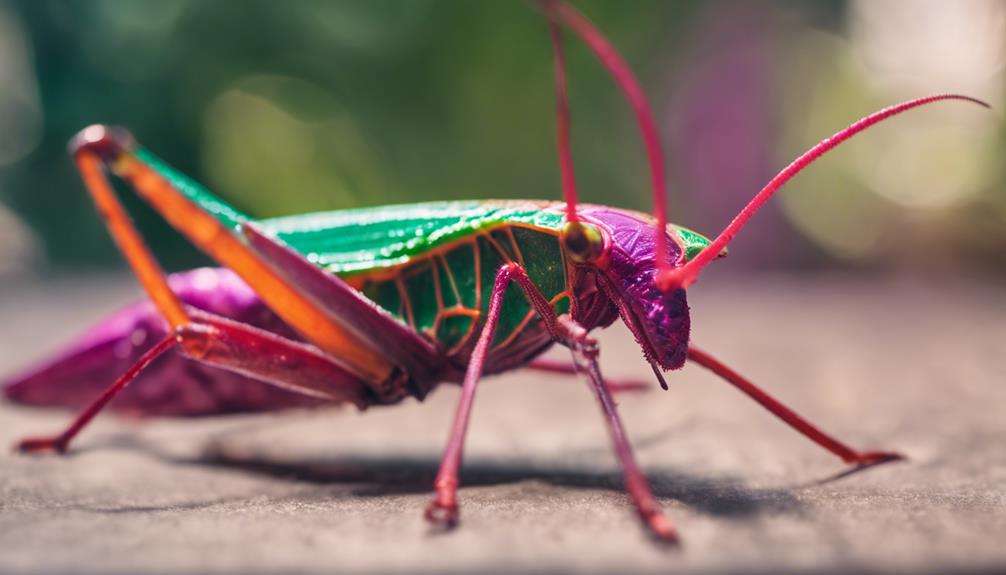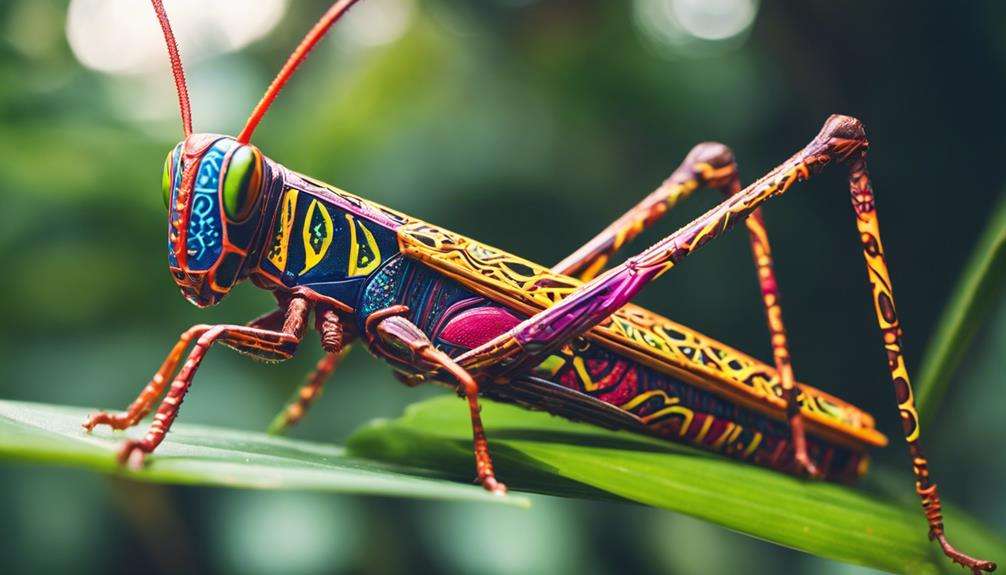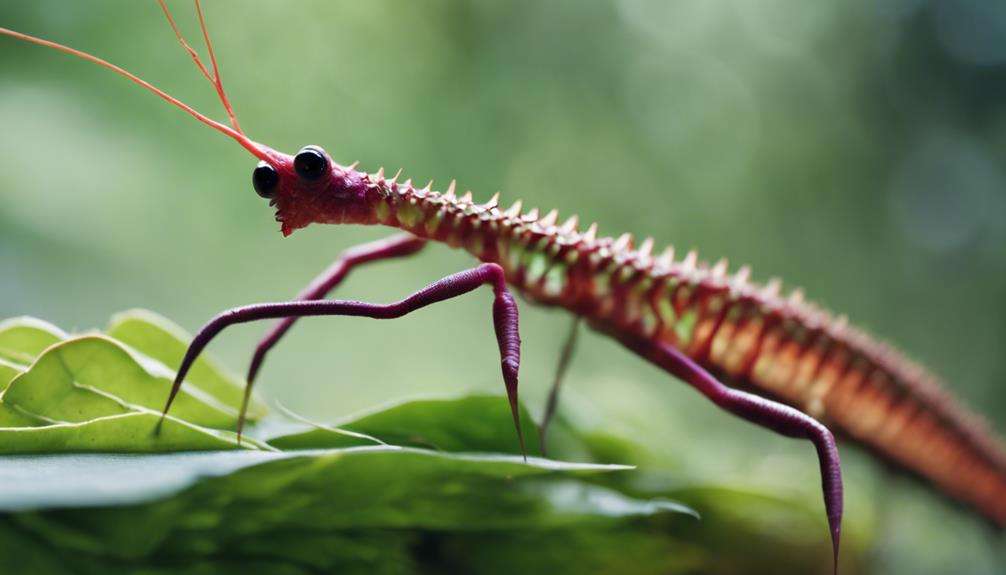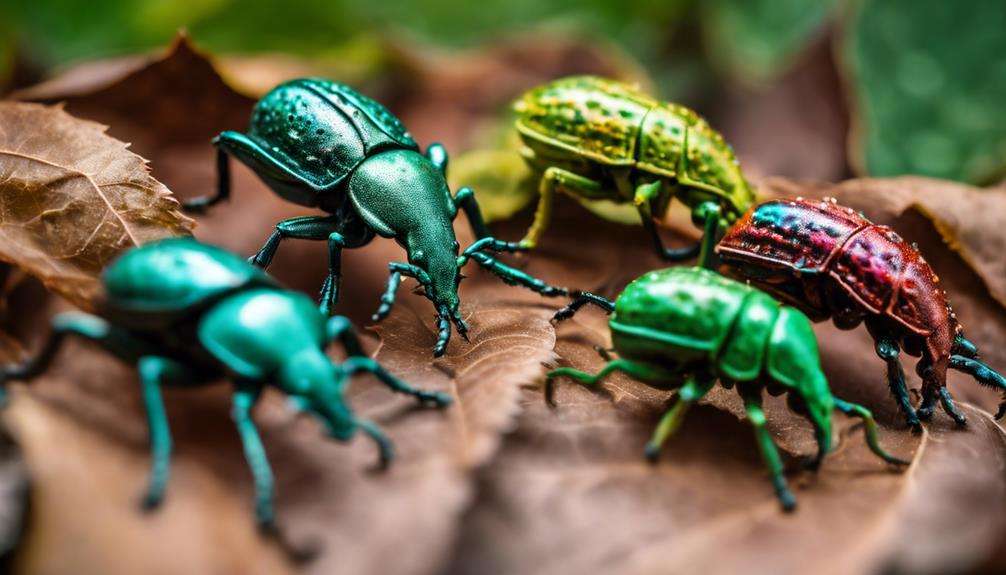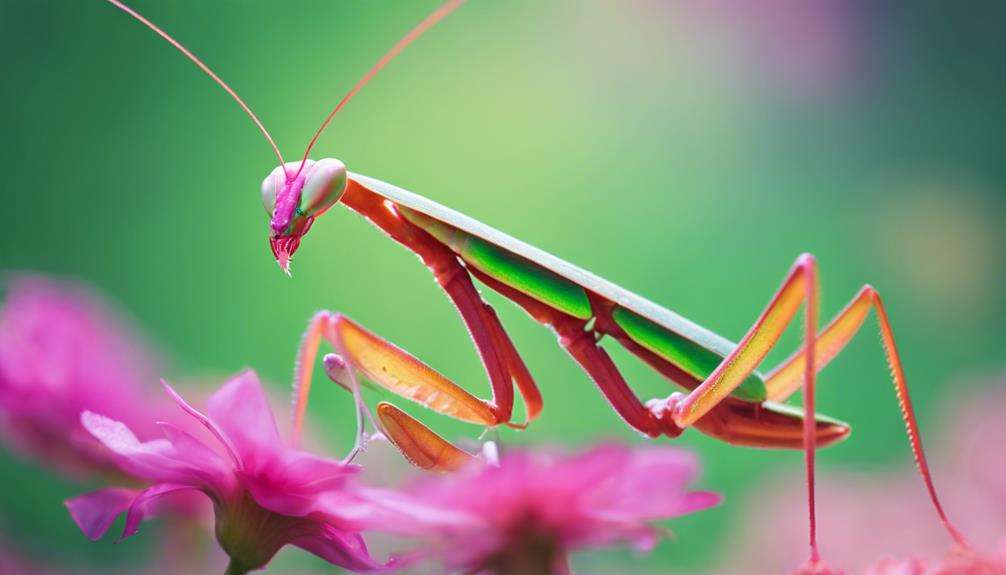Imagine caring for a delicate butterfly pet is like tending to a fragile work of art; it requires precision, patience, and attention to detail.
As you navigate the realm of unique butterfly species and their intricate needs, you will uncover ten essential tips that can make a significant difference in the well-being of these exquisite creatures.
Each tip holds a key to fostering a harmonious relationship between you and your fluttering companion, ensuring a fulfilling journey of discovery and care.
Key Takeaways
- Understand dietary needs and mimic natural habitats for optimal care.
- Provide suitable plants for feeding, egg laying, and resting spots.
- Maintain ideal temperature, humidity, and nutrition for healthy development.
- Contribute to conservation efforts to support butterfly populations and biodiversity.
Monarch Butterfly Care Guide
When caring for Monarch butterflies, it's essential to provide a habitat that supports their unique lifecycle and migratory behaviors. Monarchs, a species of butterfly known for their distinctive orange or dark yellow wings with black vein patterns, have specific requirements for their care. One crucial aspect is the provision of food plants. Monarchs rely on milkweed plants as their primary host for egg laying and caterpillar feeding. Ensuring a plentiful supply of milkweed is fundamental for the successful development of Monarch butterflies.
In addition to milkweed, offering nectar-rich flowers such as asters and goldenrods is vital for adult Monarchs. These flowers provide the necessary sustenance for the butterflies, supporting their energy needs for activities like mating and migration. Understanding the dietary needs of Monarch butterflies is a key component of their care. By cultivating a garden with suitable food plants and nectar sources, you can contribute to the well-being of these magnificent butterflies and help conserve this iconic species.
Painted Lady Butterfly Care Tips
Painted Lady butterflies thrive in captivity when provided with a spacious and naturalistic habitat filled with nectar-rich flowers to support their well-being. These butterflies, known for their mottled orange, black, and white wing patterns, are attracted to a variety of nectar-producing flowers, making it relatively easy to care for them.
Painted Lady Butterfly Care Tips:
- Suitable Habitat: Create a large enclosure with plenty of space for flying and multiple flowers for nectar. Mimic their natural environment to reduce stress.
- Caterpillar Care: If raising from caterpillars, provide fresh host plants such as thistle, hollyhock, or malva. Ensure the caterpillars have ample food to grow and pupate successfully.
- Butterfly Nutrition: Offer a diverse range of nectar sources like zinnias, marigolds, and sunflowers. Rotate plant varieties to provide a balanced diet for adult Painted Lady butterflies.
Spring Azure Butterfly Pet Care
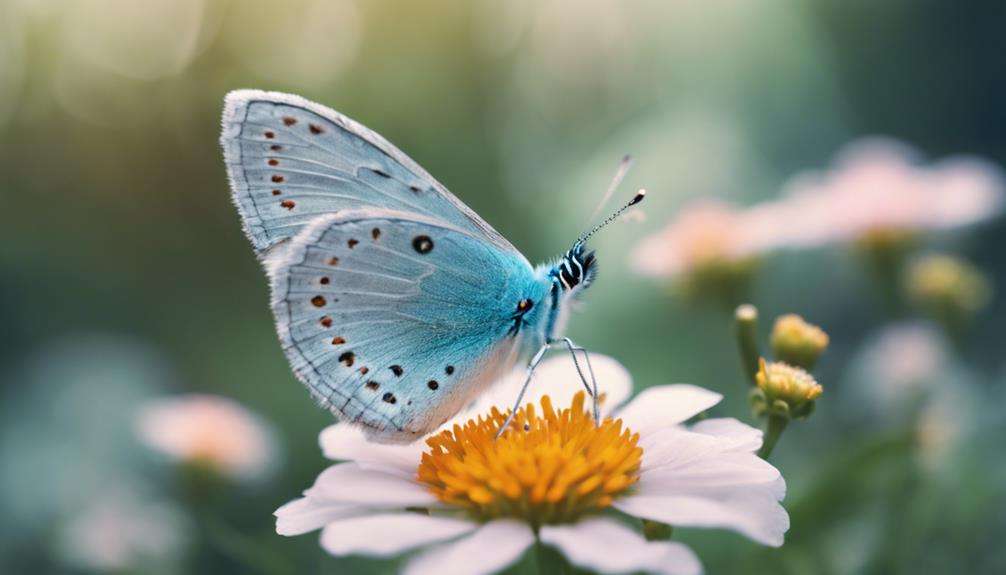
Spring Azure butterflies require habitats near water sources such as streams, ponds, and marshes for optimal living conditions. Their dietary needs are met by laying eggs on host plants like dogwood, cherry, and blueberry, where their caterpillars feed before undergoing metamorphosis.
Providing a suitable environment with a mix of host plants and nectar sources is crucial to supporting the well-being of Spring Azure butterflies in captivity.
Habitat Requirements
To ensure optimal health and well-being for your Spring Azure butterflies, it's essential to carefully consider their specific habitat requirements.
- Fresh Leaves: Provide fresh leaves for the Spring Azure butterflies to feed on and lay their eggs. This is essential for their nutrition and reproduction cycle.
- Climbing Branches: Include climbing branches within the enclosure to offer resting spots for the butterflies. These branches mimic their natural habitat and promote natural behavior.
- Temperature Range: Maintain a temperature range between 70-80°F with moderate humidity levels. This temperature range is crucial for the overall health and activity levels of the Spring Azure butterflies.
Dietary Needs
When caring for Spring Azure butterflies, it's crucial to provide a diet that closely mimics their natural feeding habits for optimal health and well-being. These butterflies primarily feed on flower nectar and tree sap in the wild. To ensure their dietary needs are met in captivity, offer a diet of sugar water or nectar-soaked items.
It's essential to provide fresh flowers with nectar in the enclosure to replicate their natural feeding behavior. Additionally, Spring Azure butterfly caterpillars rely on specific host plants such as dogwood, viburnum, and blueberry for sustenance. To maintain a balanced diet, make sure to provide access to nectar sources and host plants within their environment.
Consistently meeting these dietary requirements is key to the proper care of Spring Azure butterflies.
Unique Butterfly Species Nutrition
For optimal health and development, unique butterfly species require a carefully balanced diet consisting of nectar-soaked items, fresh plant leaf fragments, and a variety of other nutritious sources.
Nutrition Tips for Unique Butterfly Species:
- Nectar-Soaked Items: Offer nectar or sugar water as primary food sources, mimicking their natural feeding habits. Nectar provides essential sugars and energy for these delicate creatures.
- Fresh Plant Leaf Fragments: Provide fresh, moist plant leaf fragments for caterpillars to consume. Different butterfly species have specific plant species they prefer, so research the preferences of your unique butterfly.
- Variety in Diet: Ensure a balanced and varied diet to meet the specific nutritional needs of your unique butterfly species. Introduce different sources of nutrition to ensure they receive all the essential nutrients necessary for their health and well-being.
Legal Aspects of Butterfly Ownership
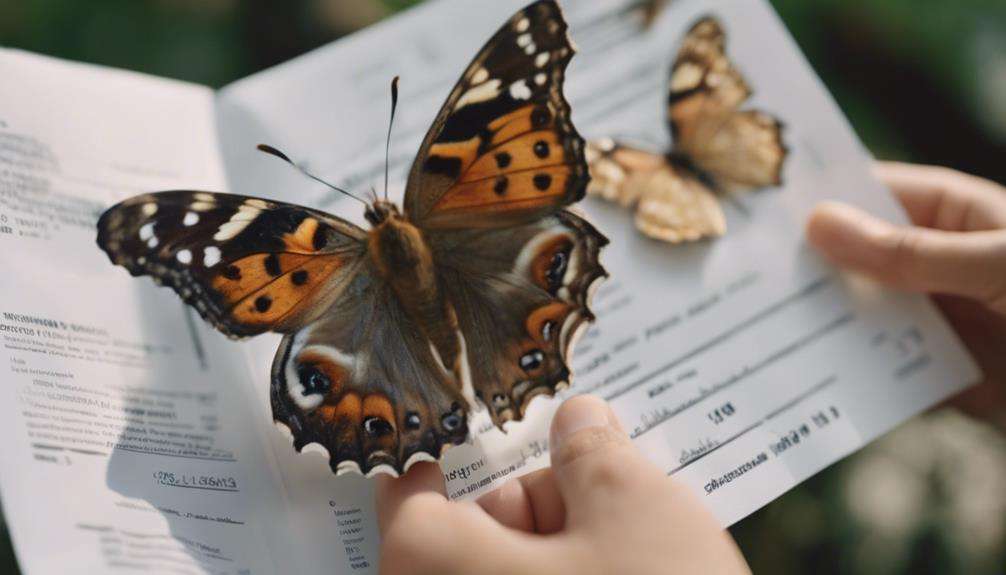
Navigating the realm of butterfly ownership entails understanding and abiding by the legal considerations that govern the possession and care of these delicate creatures. Legal regulations surrounding butterfly ownership can vary significantly between states and may involve the requirement of permits. It's essential to be aware that certain butterfly species are classified as endangered or pests, impacting the legality of owning them as pets. Conflicting recommendations exist regarding the suitability of keeping specific butterfly species as pets due to conservation concerns.
Furthermore, it's important to note that it's illegal to purchase and transport live butterfly or moth specimens across state lines without the appropriate permits or licenses. Therefore, before considering owning a butterfly as a pet, it's crucial to ensure compliance with state laws and regulations to avoid any legal repercussions. By being informed about ownership legality, legal regulations, and state laws, you can responsibly enjoy the beauty of butterflies while respecting conservation efforts and maintaining legal compliance.
Acquiring Rare Butterfly Species
To acquire rare butterfly species responsibly, it's essential to explore reputable sources such as specialized breeders, conservation organizations, or certified suppliers. When considering acquiring rare butterfly species, keep in mind the following:
- Legal Considerations: Some rare butterfly species may be protected under conservation laws, requiring specific permits or licenses for ownership. Ensure compliance with these regulations to avoid legal issues and contribute to conservation efforts.
- Networking: Research online forums and butterfly enthusiast groups to connect with individuals who may possess or know where to find rare butterfly species. Networking can provide valuable insights and opportunities to acquire these unique butterflies.
- Events and Exhibitions: Attend butterfly exhibitions, conservation events, or butterfly farms to discover and potentially acquire rare butterfly species. These platforms not only offer the chance to acquire butterflies but also to learn more about their conservation status and care requirements.
Creating Ideal Butterfly Habitats

Ensuring the creation of optimal butterfly habitats involves meticulous attention to detail in replicating natural environments within controlled settings. When setting up an enclosure for your butterfly species list, it's crucial to provide ample space for flying butterflies to prevent wing damage.
Including branches and climbing structures allows crawling butterflies to explore and rest comfortably. Mimicking natural environments by adding plants, rocks, and other natural materials in the tank is essential for the well-being of your butterflies.
To maintain a healthy habitat, ensure good ventilation to maintain air quality and prevent mold growth. Creating a safe and secure environment is paramount to protect butterflies from predators and ensure their overall well-being.
Benefits of Butterflies in Ecology
Replicating natural butterfly habitats within controlled environments is crucial for understanding the significant benefits butterflies contribute to ecology. As pollinators, butterflies play a vital role in the reproduction of numerous plant species. Their delicate flight patterns and feeding behaviors facilitate the transfer of pollen, aiding in the growth and genetic diversity of plants.
Here are three key benefits of butterflies in ecology:
- Indicator of Ecosystem Health: Butterflies serve as valuable indicators of ecosystem health. Changes in butterfly populations can reflect imbalances in plant and animal communities, highlighting the overall ecological well-being of an area.
- Pollinators: By visiting flowers in search of nectar, butterflies inadvertently transfer pollen from one plant to another, promoting fertilization and seed production. This essential role in pollination directly impacts plant reproduction and biodiversity.
- Support for Conservation Efforts: Given their sensitivity to environmental changes, declines in butterfly populations can signal broader ecological disruptions. Conservation efforts focused on protecting butterflies also benefit other species and help preserve overall biodiversity.
Caterpillar Care Techniques
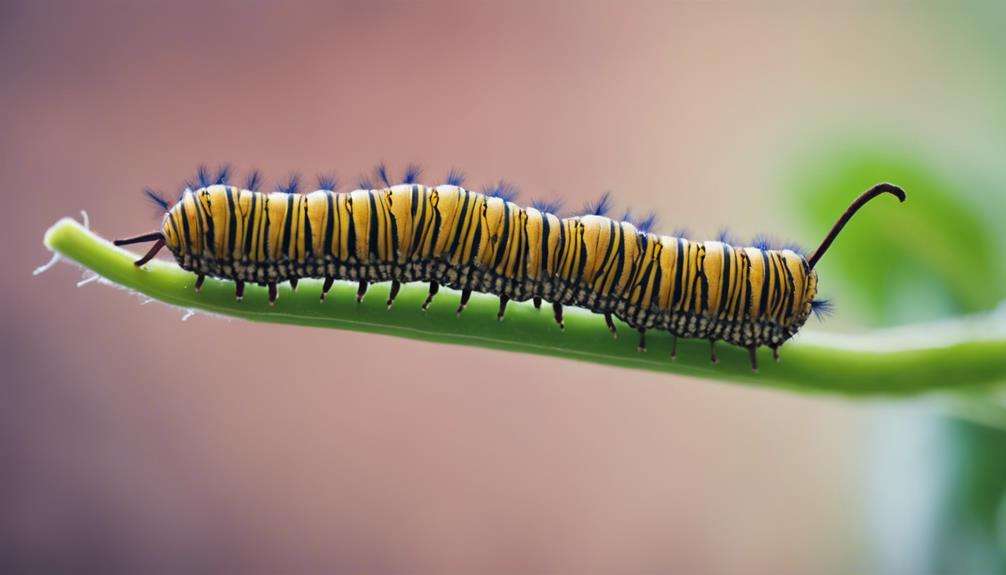
To ensure the well-being of your caterpillars, you must carefully select a variety of fresh leaves rich in essential nutrients for their diet.
Providing a spacious and clean habitat is crucial for their development and health.
Caterpillar Diet Tips
For optimal caterpillar health and development, it's crucial to provide a varied selection of fresh leaves that cater to their specific nutritional requirements. Caterpillars rely on fresh leaves as their primary source of nutrition, aiding in proper growth and metamorphosis into butterflies.
Here are some essential caterpillar diet tips:
- Diverse Leaf Menu: Offering a variety of fresh leaves ensures caterpillars receive a balanced diet rich in essential nutrients.
- Nutritional Needs: Different caterpillar species have specific dietary requirements, so research the ideal leaves for your caterpillar species.
- Hydration Source: Fresh leaves not only provide nutrition but also contain important leaf droplets that caterpillars rely on for hydration, essential for their overall health and development.
Caterpillar Habitat Setup
To ensure the optimal health and well-being of your caterpillars, creating a suitable habitat setup is essential in providing the necessary conditions for their growth and development. Caterpillars require a spacious and ventilated enclosure to thrive, allowing for proper airflow and movement.
It's crucial to provide fresh leaves for nutrition and moisture to support their health and growth. Regular tank cleaning is imperative to prevent mold and bacteria buildup, ensuring a clean environment for the caterpillars.
Adequate space for pupation is vital, and a smooth transfer of pupae to suitable enclosures should be facilitated. Maintaining suitable temperature, food availability, and ample space are key factors in promoting the well-being of caterpillars within their habitat.
Butterfly Cocoon Maintenance Requirements
Keeping a close eye on the color and texture changes of butterfly cocoons is crucial for anticipating the emergence process effectively. During the pupation stage, the transformation from caterpillar to butterfly takes place inside the protective cocoon. To ensure the successful metamorphosis of the butterfly, specific maintenance requirements must be met:
- Ventilation: Adequate airflow within the enclosure is essential to prevent mold growth and maintain optimal oxygen levels around the cocoon. Stagnant air can hinder the development of the butterfly inside the cocoon.
- Humidity Control: Maintaining stable humidity levels around the cocoon is vital for the metamorphosis process. Fluctuations in humidity can impact the development of the butterfly and may lead to complications during emergence.
- Avoid Disturbances: Refrain from moving or disturbing the cocoon once the pupation stage has begun. Any disruptions to the cocoon can cause damage to the developing butterfly or interrupt the metamorphosis process.
Frequently Asked Questions
How Do You Take Care of a Pet Butterfly?
To care for a pet butterfly, provide a spacious habitat with fresh leaves and nectar-rich flowers. Ensure a clean environment, space for pupation, and monitor temperature. By meeting these needs, you support butterfly behavior, health, and maximize their lifespan.
What Is the Best Butterfly to Keep as a Pet?
When considering a pet butterfly species, Painted Lady butterflies are your best choice. Their hardiness, wide host plant range, and distinctive appearance make them a top pick for enthusiasts. They are adaptable and easy to care for.
What Can You Feed a Pet Butterfly?
You should offer a balanced diet for your pet butterfly, including sugar water, nectar-soaked items, and fresh plant leaf fragments. Providing varied food sources mimicking their natural diet is crucial for meeting their nutritional needs and ensuring their health.
What Do Butterflies Need in Captivity?
In captivity, butterflies need spacious and ventilated habitats to thrive. Caterpillars require fresh leaves for nutrition. Regular tank cleaning is crucial to prevent mold. Adequate space for pupation and suitable enclosures for pupae transfer are necessary.
Conclusion
As you carefully tend to your unique butterfly species, remember that they're more than just pets – they're vital contributors to the ecosystem.
Just as the delicate wings of a butterfly play a crucial role in pollination, your role in providing proper care and creating a suitable environment for these creatures is essential for their well-being and survival.
By following the tips outlined in this guide, you aren't only caring for a pet but also playing a part in preserving the delicate balance of nature.
